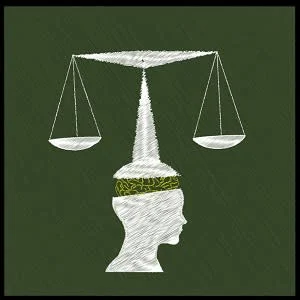Women have steeper increases in blood pressure than men throughout their life, and cardiovascular disease presents itself much differently in women than men. While biology is an important concept when defining the sex differences in the pathophysiology of cardiovascular disease, its pathophysiologic alterations, and variability in treatment effectiveness, is bias also an element in adverse cardiovascular outcomes in women?
Blood pressure may be considered as the single most accessible metric of cardiovascular ageing and also the largest contributor to ischaemic heart disease and heart failure among women. The problem with the diagnosis and treatment of cardiovascular disease is that sex as a biologic variable still remains neglected, and the fact that arterial hypertension poses a greater burden for women than for men, and has more adverse pathophysiologic consequences on them is not effectively addressed. Uncontrolled hypertension can lead to structural and functional cardiac changes, defined as hypertensive heart disease.
You might also like: The Future of Cardiovascular Medicine – Technology, Gender Bias and Treatment Strategies
There are certain factors that must be considered as far as women and cardiovascular disease is concerned. Hypertension in women is associated with more left ventricular hypertrophy and less hypertrophy regression compared to men. Abnormal obesity is associated with left ventricular mass more in women than in men. Women are also more likely to develop left ventricular hypertrophy during antihypertensive treatment than men. Hypertension is a common aetiology of atrial fibrillation, and systolic blood pressure is a major risk factor for myocardial infarction in women. Overall, hypertensive heart disease is more prevalent in women than in men and is also modifiable during treatment.
Despite all these facts, women remain untreated to goal. There are more women in the US who take antihypertensive medicine with blood pressure levels higher than treatment goals as compared to men. Lack of effective blood pressure control is more common among African American, Asian American, and Hispanic American individuals.
Sex hormones may be associated with blood pressure, and it may be possible that sex-specific processes may mediate the development of hypertension in women. There is a need for additional research regarding the association of oestrogen receptors and hypertension in women. Hormonal changes, in particular, oestrogen, may be the sole mediator of cardiovascular change.
Women may present with cardiovascular disease later in life, but women bear a disproportionate burden of heart failure with persevered ejection fraction. Also, greater adverse outcomes of atrial fibrillation may be seen in elderly women. Coronary heart disease is more complex in women than in men.
All these facts and observations suggest that sex differences must be considered when diagnosing and treating cardiovascular disease. And yet, women often do not receive correct diagnoses and are not treated according to evidence-based guidelines.
Gender bias thus remains an important component of adverse outcomes for women. Women deserve equity in research and prevention, and they also deserve equal access to care and treatments. It is time to increase the awareness of women's cardiovascular health among policymakers and legislators to ensure that inequities in research, prevention and access to cardiovascular care are addressed and women's cardiovascular health is given the same importance as men.
Source: JAMA Cardiology
Image Credit: iStock
References:
Wenger NK (2020) Adverse Cardiovascular Outcomes for Women—Biology, Bias, or Both? JAMA. doi:10.1001/jamacardio.2019.5576
Latest Articles
cardiovascular disease, gender bias, Hypertension, women's heart health
Gender bias thus remains an important component of adverse outcomes for women. Women deserve equity in research and prevention, and they also deserve equal access to care and treatments.










